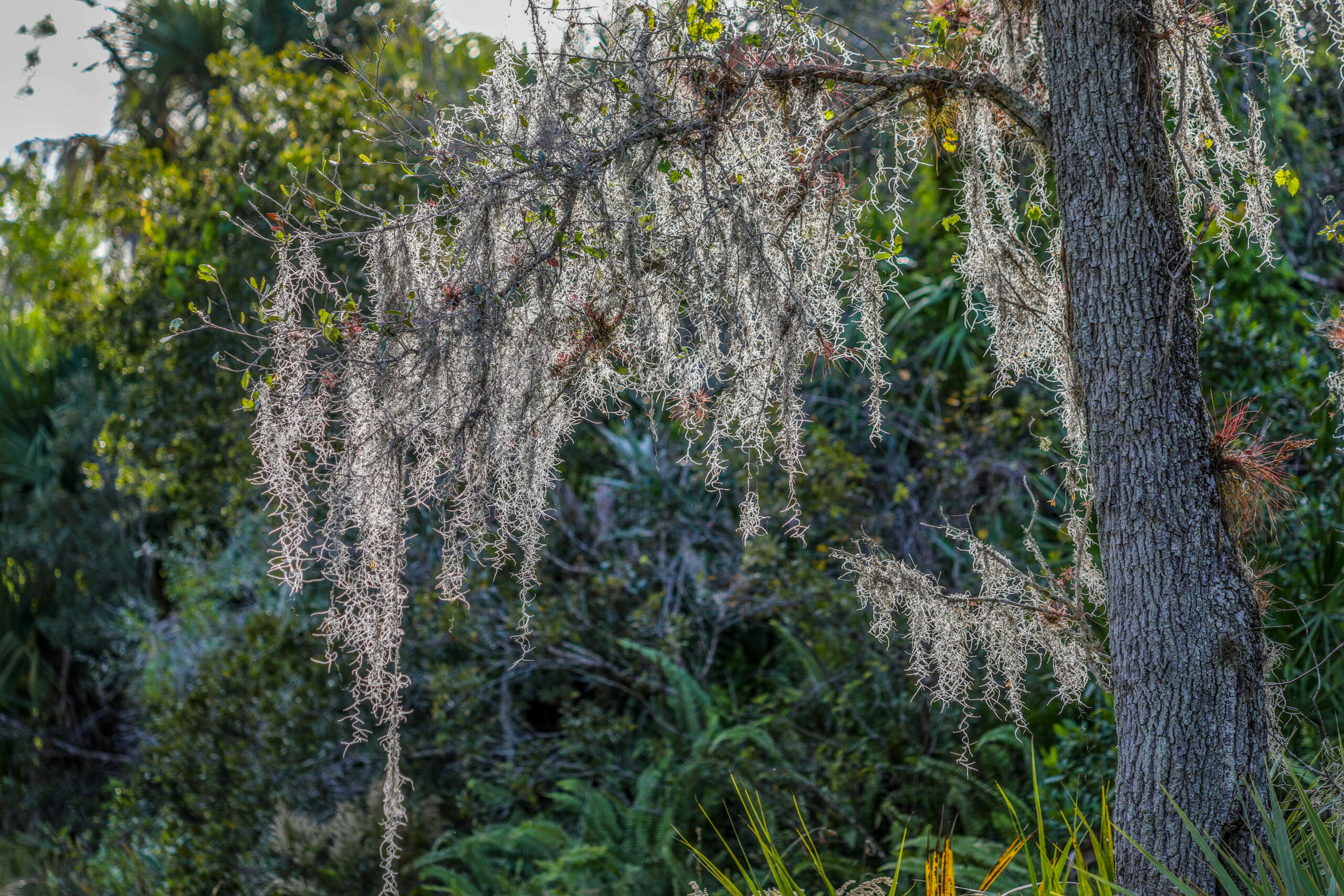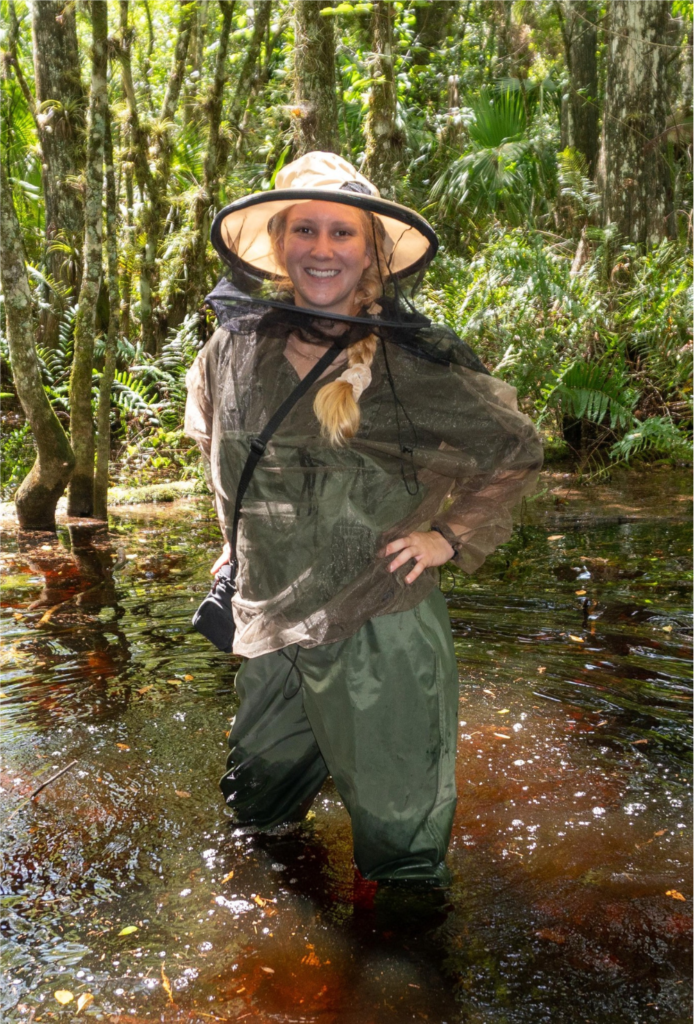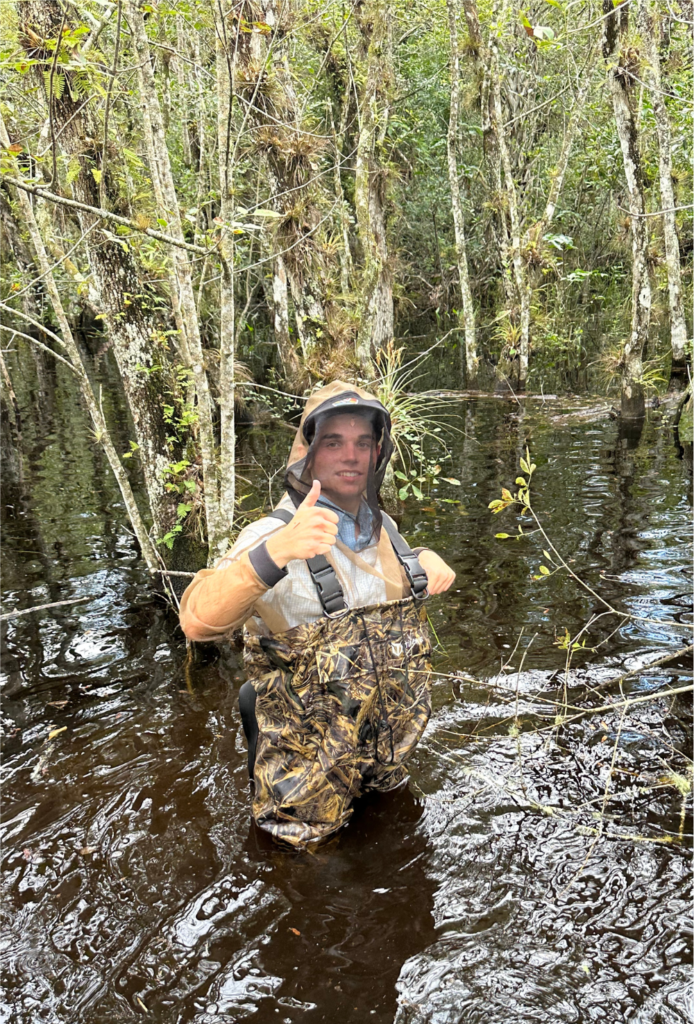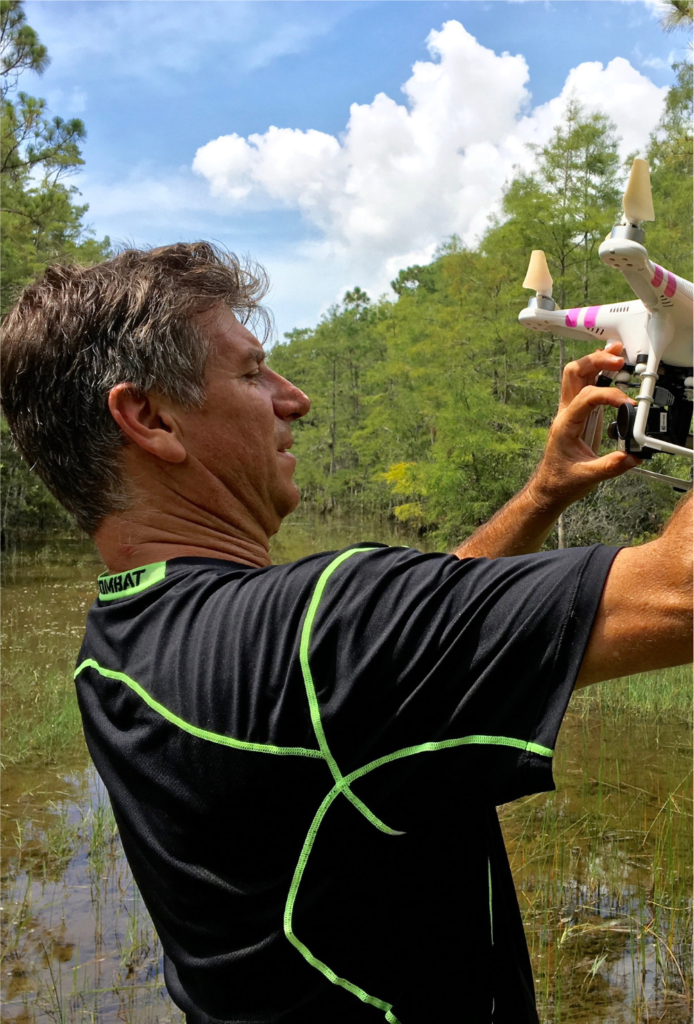Spanish Moss in the Everglades: A Mystical Presence in the Swamp
Spanish moss is one of the most iconic and intriguing plants of the American South, and it plays a unique role in the subtropical wilderness of the Everglades. Draped elegantly over the branches of cypress and oak trees, this air plant adds a layer of mystique to the Everglades’ diverse landscape. Despite its delicate appearance, Spanish moss is a resilient and adaptable plant, perfectly suited to the humid, swampy conditions of this unique ecosystem. In the Everglades, Spanish moss is more than just a decorative element; it is an important part of the ecosystem that contributes to the region’s rich biodiversity.
What is Spanish Moss?
Spanish moss (Tillandsia usneoides) is not actually a moss but a member of the Bromeliad family, which includes pineapples and other air plants. It is an epiphyte, meaning it grows on other plants, such as trees, without taking nutrients from them. Instead, Spanish moss absorbs moisture and nutrients directly from the air and rain through its specialized leaves. This allows it to thrive in the humid, warm conditions of the Everglades, where it can be seen hanging in long, silvery-green strands from tree branches.
Adaptations for Life in the Everglades
The Everglades is characterized by its hot, humid climate and frequent rainfalls, creating an ideal environment for Spanish moss. This plant has developed unique adaptations that allow it to survive in this challenging environment. Its leaves are covered in tiny, scale-like structures called trichomes, which help the plant capture moisture and nutrients from the air. This ability to absorb water directly from the atmosphere means that Spanish moss does not rely on soil, making it perfectly suited for the canopy lifestyle it leads in the swampy regions of the Everglades.
Spanish moss can endure periods of drought by entering a dormant state. During dry spells, it may turn a grayish color and appear brittle, but it quickly revives when the air becomes moist again. This resilience is crucial for survival in the Everglades, where water levels and weather conditions can fluctuate dramatically throughout the year.
Ecological Importance of Spanish Moss in the Everglades
Spanish moss plays a subtle yet significant role in the ecology of the Everglades. It provides habitat and shelter for a variety of wildlife. Birds, such as warblers and vireos, often use Spanish moss as nesting material, weaving its strands into their nests to create a warm, insulated environment for their eggs and chicks. Some bird species, like the Northern Parula, even nest directly within the hanging clumps of Spanish moss, finding safety from predators in its dense foliage.
In addition to birds, a range of insects and small animals also find refuge in Spanish moss. Spiders and other invertebrates inhabit the tangled masses of moss, adding to the biodiversity of the Everglades. By offering a microhabitat for these creatures, Spanish moss contributes to the complex web of life that makes the Everglades such a rich and vibrant ecosystem.
Spanish Moss and the Everglades Aesthetic
Beyond its ecological role, Spanish moss is an iconic feature of the Everglades’ landscape. Its draping, ethereal presence gives the swamps and forests an almost mystical quality, enhancing the region’s natural beauty. The sight of Spanish moss hanging from ancient cypress trees, reflected in the still waters of a swamp, is a quintessential image of the Everglades. It evokes a sense of timelessness and connection to the natural world that is central to the character of this vast wilderness.
Misconceptions About Spanish Moss
While Spanish moss is often admired for its beauty, it is sometimes misunderstood. Some people mistakenly believe that it is harmful to the trees it grows on. However, as an epiphyte, Spanish moss does not extract nutrients from its host tree. Instead, it uses the tree merely as a support structure. It does not take anything away from the tree’s health, nor does it damage the bark. In rare cases, if Spanish moss becomes overly dense, it can shade the leaves of the tree or add weight to branches, but this is generally not a significant concern in the wild.
The Role of Spanish Moss in Conservation and Culture
Spanish moss is an important indicator of environmental health. Its presence in the Everglades signals that the air quality and humidity levels are conducive to its survival. Conservation efforts that protect the natural habitats of the Everglades, including the cypress and oak trees on which Spanish moss depends, also help ensure that this iconic plant continues to thrive.
Culturally, Spanish moss has been a symbol of the southern United States for centuries. In the Everglades, it is part of the region’s identity, contributing to the unique aesthetic and ambiance that draws people to this natural wonder. Historically, it has been used by indigenous peoples and early settlers for various purposes, from bedding to insulation. Today, it remains a beloved feature of the landscape, admired by visitors and locals alike for its beauty and the sense of place it provides.
Spanish Moss: A Silent Guardian of the Swamp
Spanish moss may seem like a delicate, decorative element, but it is a resilient and vital part of the Everglades ecosystem. Its graceful presence adds to the beauty and complexity of the swamp, providing habitat for wildlife and contributing to the region’s biodiversity. By thriving in the canopy of trees, it reminds us of the interconnectedness of life in the Everglades and the importance of preserving this unique environment.
Spanish moss is more than just an ornamental plant hanging from the trees; it is a silent guardian of the Everglades. Its ability to survive and flourish in this harsh yet beautiful environment symbolizes the resilience and wonder of the natural world. Protecting the habitats that support Spanish moss is part of the broader effort to conserve the Everglades and ensure that this magical landscape continues to inspire awe for generations to come.












